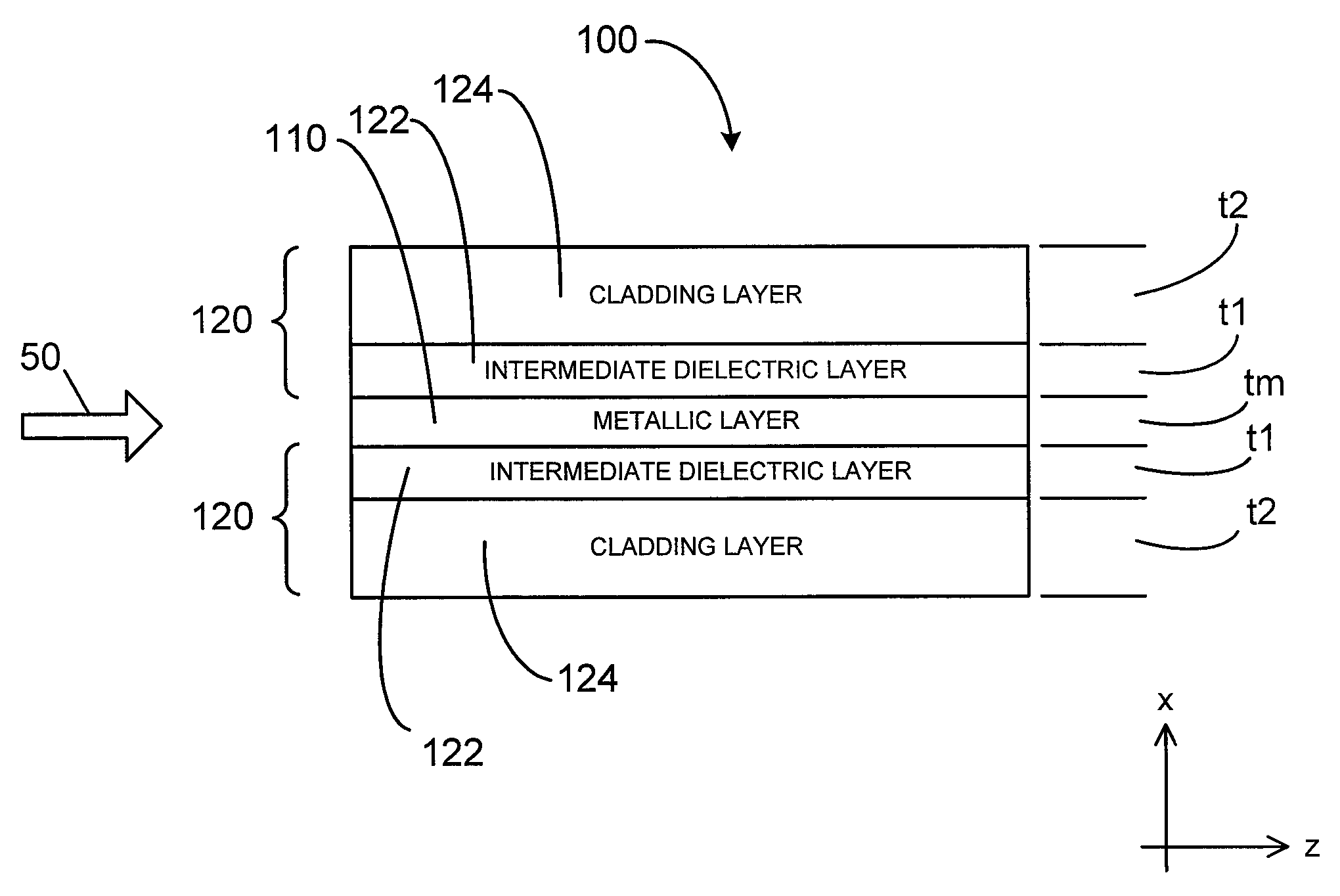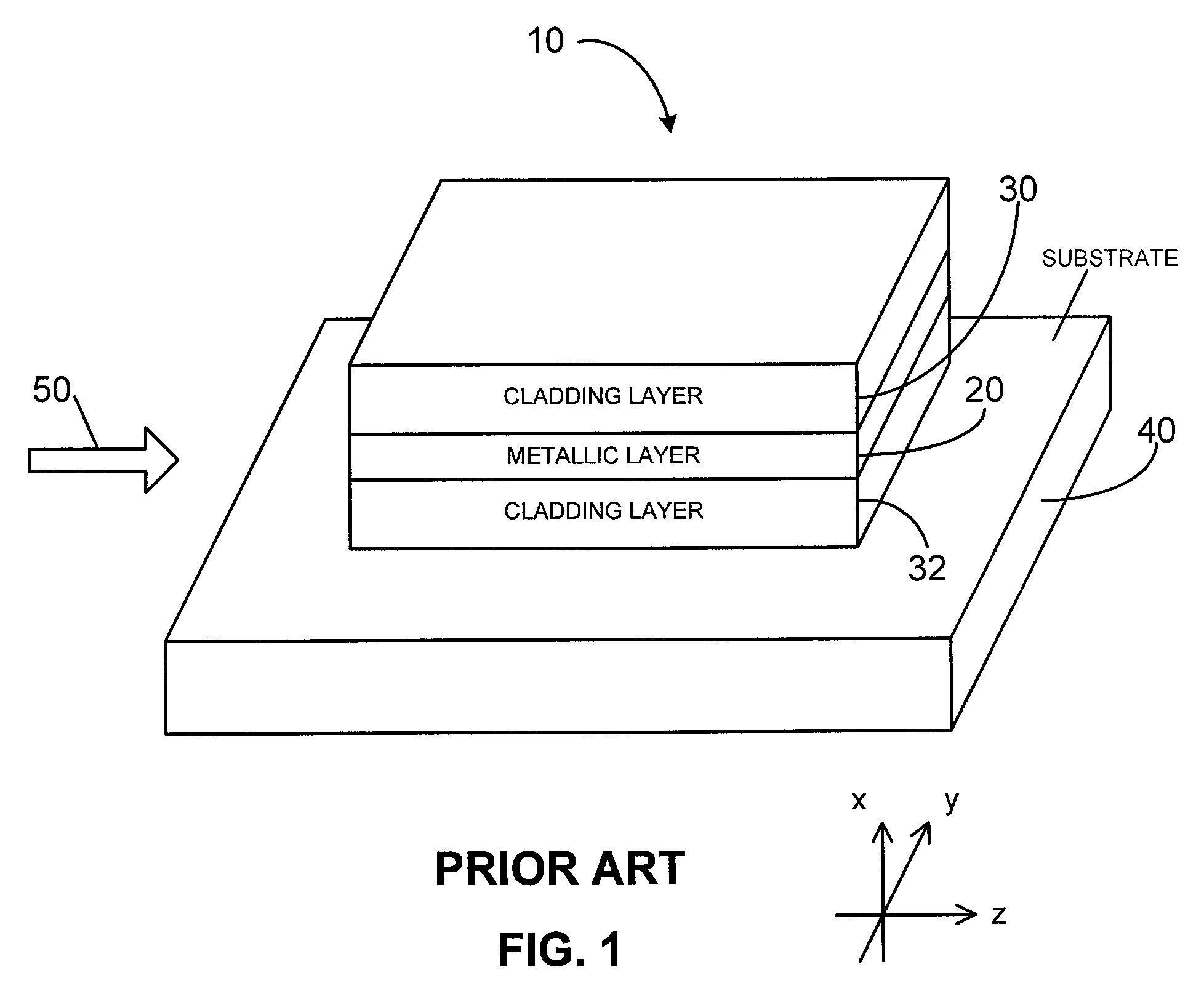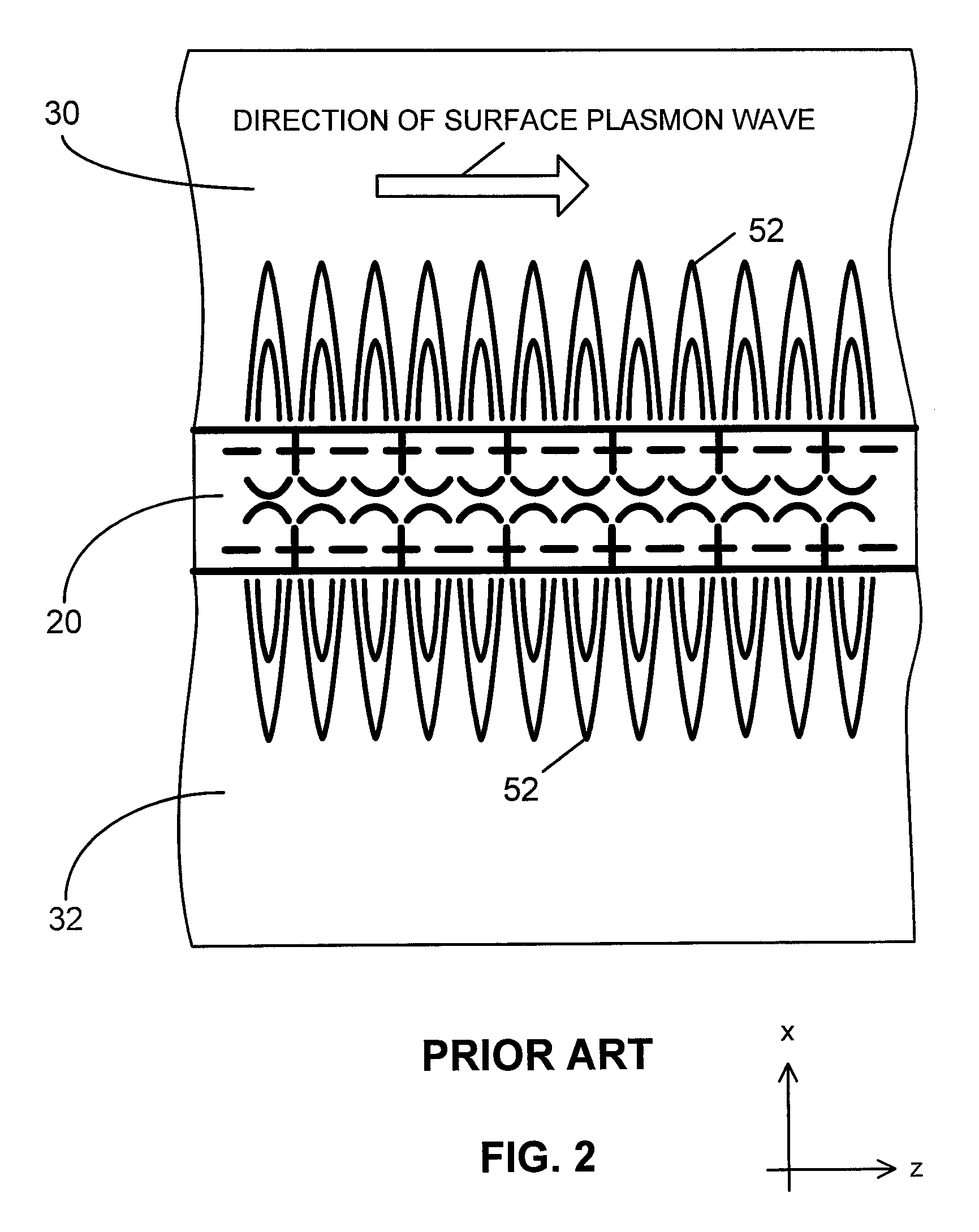Waveguides for ultra-long range surface plasmon-polariton propagation
a waveguide and ultra-long-range technology, applied in the direction of optical waveguide light guide, optical element, instrument, etc., can solve the problems of metal film loss of metallic properties, metal film thickness less than 15 nm, and the propagation range provided by the conventional structure is not as great as desired for many applications
- Summary
- Abstract
- Description
- Claims
- Application Information
AI Technical Summary
Benefits of technology
Problems solved by technology
Method used
Image
Examples
Embodiment Construction
[0027]A conventional waveguide 10 for propagating a surface plasmon-polariton wave is depicted in FIG. 1. The conventional waveguide 10 guides a surface plasmon-polariton (SPP) wave in the z direction as shown. The long range surface plasmon-polariton mode of the conventional waveguide 10 has a propagation range of a few millimeters or less for surface plasmon-polariton waves that are induced by an excitation signal 50, such as a laser, at optical frequencies.
[0028]The conventional waveguide 10 comprises layers of material deposited on a substrate 40. The substrate 40 serves as a support structure for the other layers. A first homogeneous dielectric material is deposited on the substrate 40 and is referred to as a bottom homogeneous dielectric cladding layer 32. A metallic layer 20 is then deposited on the top surface of the bottom homogeneous dielectric layer 32. Another layer 30 of homogeneous dielectric material, referred to as the top homogeneous dielectric cladding layer 30, is...
PUM
| Property | Measurement | Unit |
|---|---|---|
| thickness | aaaaa | aaaaa |
| thickness | aaaaa | aaaaa |
| dielectric constant | aaaaa | aaaaa |
Abstract
Description
Claims
Application Information
 Login to View More
Login to View More - R&D
- Intellectual Property
- Life Sciences
- Materials
- Tech Scout
- Unparalleled Data Quality
- Higher Quality Content
- 60% Fewer Hallucinations
Browse by: Latest US Patents, China's latest patents, Technical Efficacy Thesaurus, Application Domain, Technology Topic, Popular Technical Reports.
© 2025 PatSnap. All rights reserved.Legal|Privacy policy|Modern Slavery Act Transparency Statement|Sitemap|About US| Contact US: help@patsnap.com



